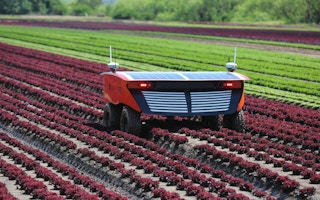Robots will soon be fixtures in farms. From tracking cattle and measuring crop health to counting yields and dispensing agro-chemicals, the new technologies promise solutions to pressing farm labour shortages, yield and productivity issues as well as growing environmental concerns.
“We are starting to see more and more robots on the farm, doing farm tasks and eventually, we are going to get to the stage where you see semi-automated or even fully automated farms happening,” Salah Sukkarieh, director of research and innovation at the Australian Centre for Field Robotics (ACFR), said during the Falling Walls conference (7-11 November) in Berlin.
Pointing out that leaps forward in computing power have made real time data gathering and analysis possible, Sukkarieh said farmers would now be able to make critical decisions that address the issues of an individual plant, tree or animal, rather than having to apply decisions on a whole farm or orchard.
“
We are starting to see more and more robots on the farm, doing farm tasks and eventually, we are going to get to the stage where you see semi-automated or even fully automated farms happening.
Salah Sukkarieh, director of research and innovation, Australian Centre for Field Robotics (ACFR)
The robots are equipped with instruments that collect hyper-spectral and multi-spectral images and infrared, thermal and laser data. This information is then fed into machine learning algorithms that enhance the robot’s performance.
Other tools such as precision nozzles allow them to target specific plants for the application of pesticides and fertilisers, dramatically cutting chemical use. Powered by solar panels, robots such as RIPPA are able to function for days.
This photo gallery explores the exciting developments in field robotics that were presented during the conference, touching on the capabilities of different robots and the information they are now able to supply farmers.
Presently, the robots are still beyond the means of small farms in developing countries, admits Sukkerieh. But the ACFR, which is one of the largest robotics research institutions in the world, is hopeful that the technology will become increasingly affordable, particularly thanks to developments in 3D printing.
This article was originally published on SciDev.Net. Read the original article.

















